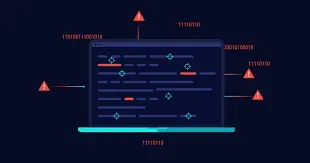How to Inject Code into a Website for Remote Control
How to Inject Code into a Website for Remote Control
Introduction
Today, we will learn how to inject code into a website to
gain remote control of the entire site. By identifying the programming language
used on a website, we can send our own malicious code and take control.
Additionally, we will explore a specific tool that simplifies the process of
remote control. It's important to stay vigilant and protect your online
presence, so let's get started.
Identifying
the Programming Language
Before we can inject code, we need to determine the
programming language used by the website. By examining the IP address and file
extension, we can quickly identify the language. In this case, the website is
running on PHP.
Using a tool called Webalyzer, we can scan the website and
confirm the programming language. In this case, it is PHP.
Code
Injection Attack
Now that we know the website is vulnerable to code
injection, we can proceed with the attack. The website has input fields where
we can enter our malicious payload. By crafting the right payload, we can
execute shell commands to gain control of the server.
One of the key areas to target is the "reflecting back
your message" feature. By changing the message input to include our
payload, we can see the result of the injection. In this case, we successfully
executed a PHP command and obtained information about the PHP version.
Furthermore, we can use commands like "system who am
I" to find out the user operating the server and "PWD" to
determine the current working directory. By exploring the directories, we might
discover sensitive information like passwords.
Remote
Control of the Server
Once we have gained execution rights on the system, we can
take control of the server remotely. With commands like "ls -l" and
"cat bw.sql", we can view the contents of directories and files.
If we come across a SQLite file, we can use a tool like DB
Browser for SQLite to browse its data. This allows us to access information
stored in the file, such as usernames and passwords.
For even more advanced control, we can use a tool called
Comics. This tool enables us to remotely control the computer in a more
sophisticated manner. By providing the target URL and the necessary cookie
value, we can exploit the system and gain full control.
With this level of access, we can execute various commands
and navigate through the system. We have successfully achieved remote control
of the entire computer using the Comics tool.
Conclusion
Injecting code into a website for remote control can be a
powerful technique for hackers. By identifying the programming language and
exploiting code injection vulnerabilities, they can gain full control of the
server. It is crucial to stay informed about these vulnerabilities and take
necessary precautions to protect your website.



